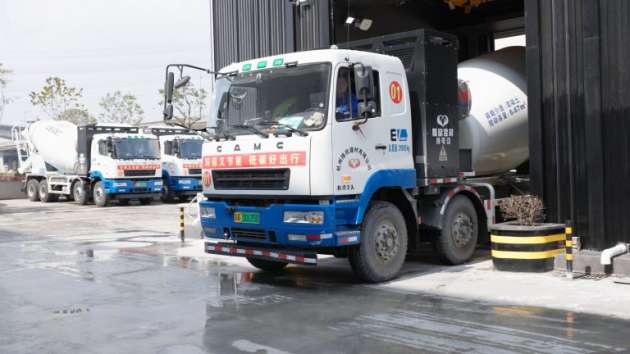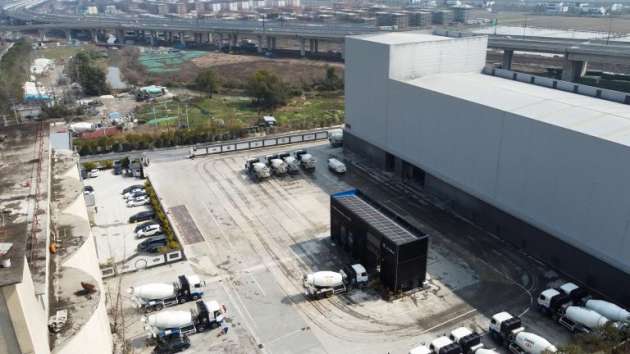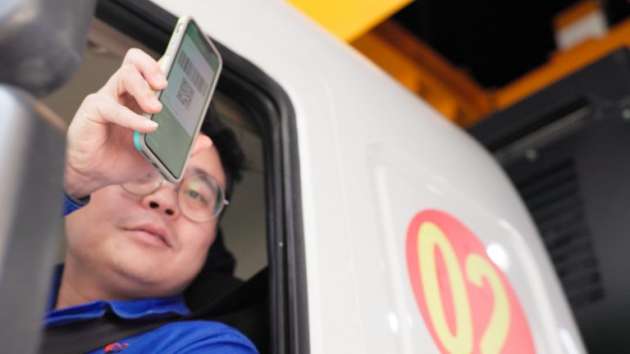Geely Technology Group, a subsidiary of Zhejiang Geely Holding, recently showcased its battery swapping technology for heavy goods vehicles (HGVs), which works a little different from passenger electric vehicles.
Developed for large trucks used in construction and logistics services, the battery swapping station is a lot larger and as demonstrated by the company, the battery pack is located behind the cab.
By comparison, battery swapping on passenger EVs involves lifting the car up and removing the battery pack from the vehicle’s floor. For HGVs, having easy access to the battery pack is not just convenient but necessary, as each battery pack weighs 3.2 tonnes and requires a crane to hoist it for a swap.
Each battery pack has an energy capacity of 280 kWh, or around three to four times that of a standard EV. This provides trucks with around 190 km of pure electric range while also powering other functions such as the mixing of cement.
The battery swapping process for HGVs is simple, with drivers first using wheel guides to make sure the truck is positioned appropriately. Then, the driver will present a QR code to a sensor to begin the automated process, which takes about five minutes – not much longer than traditional refuelling.
The company also claims a cost advantage with battery swapping, as the cost per 100 km of operating these electric trucks is around 30-40 yuan (around RM20-26). Other benefits are the battery swapping stations themselves, which occupy a space of just 200 square feet and can be constructed quickly thanks to their modular build-up.
This makes them a great solution for densely-populated urban areas, and also as an alternative to charging stations, which may require established infrastructure. Solar panels on top of the station provide energy for some of the stations’ operations.
Each station can hold eight battery packs, with each taking about an hour to fully charge through the use of smart battery management. This ensures a fully charged battery will always be ready – a single station can support up to 50 vehicles.
Looking to sell your car? Sell it with Carro.





Don’t have to wait for battery to charge. Will need to wait long long for parts to arrive.